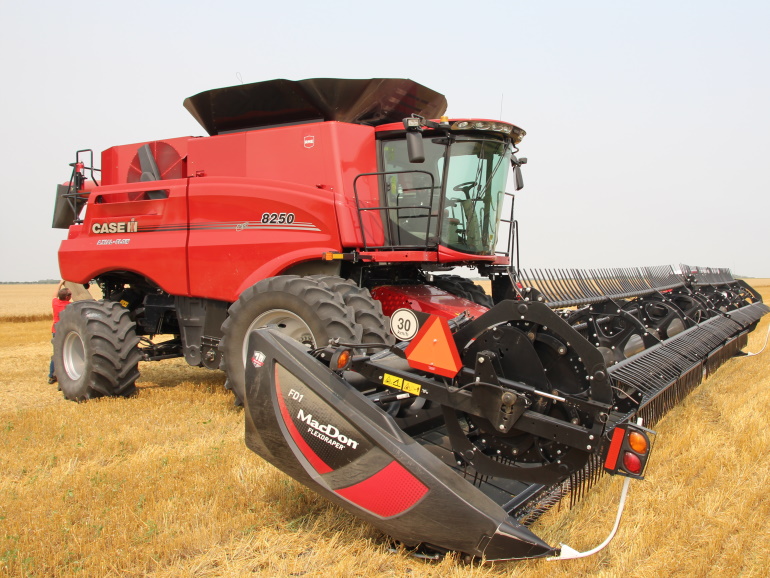Saskatchewan's weekly crop report shows most of the province received plenty of rain last week.
The Beatty area received the most with 105 millimetres (mm), followed by the Calder area with 103 mm and the Star City area with 102 mm. The Bruno, Prince Albert and Saskatoon areas all received 90 mm of rain or more. In the southeast, the Esterhazy area received the most rain this week with 86 millimetres (mm), followed closely by the Churchbridge and Saltcoats areas which both received 85 mm of rain. The areas around Goodeve and Melville received similar precipitation with 75 mm and 72 mm, respectively. Many other areas in the southeast received notable rainfall as well, which replenished soil moisture levels.
The West Central area shows the Sonningdale area had the most rain with 72 mm, followed by the Wilkie area with 59 mm. The Conquest area had notable rainfall with 40 mm, along with the Major and Zealandia areas getting 33 mm. The northeast received the most rainfall in the province last week. The area around Beatty received 105 millimetres (mm) while Star City received 102 mm. Other areas which received significant rainfall include the Bruno area with 97 mm, Prince Albert area with 96 mm and Porcupine Plain area with 94 mm. Many other areas in the northeast got 50 mm or more of rain last week
Crops Extension Specialist Tyce Masich says it was another wet week for most of Saskatchewan, including the southwest.
"There was a lot of rainfall, and that's still gonna have a positive impact on later seeded crops as they continue to fill. A lot of canola that's in the podding stage right now will help them fill those pods. The early seeded crops—it's likely too late to have much of an impact on—and any of those crops, it's actually causing some lodging issues. "
Prior to the recent rains we did see some harvest progress.Provincially, two per cent of crops have been harvested. Most of the progress has been made in the southwest, but some producers in the southeast and east-central are starting to take crop off. There's been little to no activity in the west-central and northern regions yet, but they anticipate crops to be ready within the next couple of weeks if conditions are favourable.
In the southwest, three per cent of crops have been harvested, most of which are winter cereal crops. Nearly one quarter of winter cereals have been combined with 24 per cent of winter wheat and 21 per cent of fall rye complete. Some producers started taking off spring cereal crops last week, with five per cent of barley, four per cent of oats, and one per cent of durum being combined. We've also seen five per cent of peas and two per cent of lentils now harvested in the southwest.
Masich says the northeast and parts of the southwest have seen some pretty heavy downpours, with a lot of rain falling in a short amount of time,.
"Which again probably doesn't do a lot for the crops. When rain comes down heavy like that, it just increases the risk of lodging in crops. Which is being seen in different parts of the province."
He says we're also seeing some variability within fields now as we start seeing some regrowth happening .
"A lot of plants in crops will be at two different stages. Some will have dried-down pods, and then higher up on the plants there will be some green plant material that's regrowing pods and whatnot. So it's definitely causing a challenge for producers looking to harvest."
Excess moisture in crops caused the most crop damage this week, with the rain, strong winds, and hail causing lodging and damage in the crop as well.
He notes the recent rainfall is helping to improve soil moisture levels.
This week's crop report shows provincial cropland topsoil moisture is now at 11 per cent surplus, 75 per cent adequate, 11 per cent short, and only three per cent very short. For hayland, topsoil moisture is eight per cent surplus, 68 per cent adequate, 16 per cent short, and eight per cent very short. Pastures have topsoil moisture levels at six per cent surplus, 67 per cent adequate, 19 per cent short, and eight per cent very short.
And as a general reminder, harvest is a busy time on farms, and everyone is reminded to prioritize safety mentally and physically.
The Farm Stress Line is a toll-free number that producers can use to help manage their stress during this busy time, which can be reached at 1-800-667-4442. Producers should be aware of physical hazards, such as fire and powerlines, and take preventative measures to avoid incidents. The public is reminded that there is more heavy equipment traffic on roads during harvest and to be patient by giving machinery extra time and space
To view the regional data from Saskatchewan's Weekly Crop Report click here.
